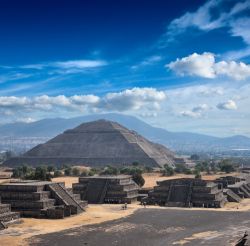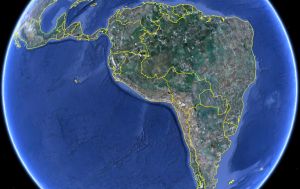
Exploring the history and experiences of mixed heritage persons and inter-racial relationships across the world

Exploring the history and experiences of mixed heritage persons and inter-racial relationships across the world
The following countries will be covered in greater detail in this section: Chile, Argentina and Brazil.
The story of Americas and particularly Latin America is a story of Spanish colonialism. It was in 1492 with Christopher Columbus' discovery of the new world that attention turned to the new world. The Portuguese just managed to claim Brazil under the Treaty of Tordesillas either by devious means or by mistake.
 The Spanish conquistadors (conquerors) help expand the empire across most of Central America, the Caribbean islands, Mexico and much of the rest of North America. Wars of independence liberated all the Spanish colonies in the Americas in the 19th century with the Spanish loss of the last two in the Spanish-American War politically ending its colonisation in the Americas. They turned their attention to other parts of the world after that.
The Spanish conquistadors (conquerors) help expand the empire across most of Central America, the Caribbean islands, Mexico and much of the rest of North America. Wars of independence liberated all the Spanish colonies in the Americas in the 19th century with the Spanish loss of the last two in the Spanish-American War politically ending its colonisation in the Americas. They turned their attention to other parts of the world after that.
The Spanish cultural influences remain very strong throughout the region with many descendants, many of mixed heritage making up significant component of many ot the ex-colonies' populations. In the Central American nation of Belize, Mestizos comprise about 34% of the population, Kriols (descendants of mixed English/ Scottish and Black African slaves) 25% and Garinagu who are a mix of African, Arawak, and Carib ancestry about 6%. That means over 70% of the population are of some sort of mixed heritage.
Mestizos in Mexico are those who have a mixed ancestry between Europeans and Amerindians and make up the largest racial identity among Mexicans comprising more than 80% of the population. About 2% of the Mexican population is of some black African descent, the great majority are of mixed heritage and are mostly the descendants of slaves. It is estimated that some 20% of Mexicans are indigenous peoples.
 The Central American situation contrasts quite sharply with the South American experience. Both Chile and Argentina claim predominately white or European majorities. Chile's estimated mestizos make up nearly 45% thus indigenous populations make up a small minority. From the 19th century to the first half of the 20th it is estimated that over 5 million Spaniads including the poor Spanish refugees from the Spanish Civil War emigrated to Argentina and so it is possible that around 86% of Argentina's population can identify as being white of European descent. Only 8% self-identify as mestizo and 1.6 % of the total population declare being Amerindians (American Indians)
The Central American situation contrasts quite sharply with the South American experience. Both Chile and Argentina claim predominately white or European majorities. Chile's estimated mestizos make up nearly 45% thus indigenous populations make up a small minority. From the 19th century to the first half of the 20th it is estimated that over 5 million Spaniads including the poor Spanish refugees from the Spanish Civil War emigrated to Argentina and so it is possible that around 86% of Argentina's population can identify as being white of European descent. Only 8% self-identify as mestizo and 1.6 % of the total population declare being Amerindians (American Indians)
Brazil stands a little separate from the rest of the South America being that it was the Portuguese island on the predominantly Spanish continent. Most Brazilians descend from the country's indigenous peoples, Portuguese settlers, and African slaves. And there has been considerable intermarriage between these groups. The brown population, pardo, is a broad category that includes Caboclos (descendants of Whites and Indians), Mulattoes (descendants of Whites and Blacks) and Cafuzos (descendants of Blacks and Indians). DNA resources confirm most Brazilians possess a mixed-race ancestry but about only 40% of the population classified themselves as being part of this group with those who as identified totally or mostly descended from European making up 49.7% of the population.
The wide range of classifications in the Americas makes it difficult to identify the concept of the Latin American. Is it the very mixed Central American and/or brown Brazilian or is it the Iberian/Mediterranean looking white South American. I quite suspect that Europe and the US would have different responses to this question. Throughout South America, Brazil included, the 'whites' hold the economic and political power and despite the rhetoric of equality, there is an imperative to improve your lot by self-identifying with a perceived higher group.